Revenue River is now an Instrumental Group Company. Learn more.
call us: 303-945-4341
Revenue River is now an Instrumental Group Company. Learn more.
Creating and distributing eBooks has proven to be an invaluable asset for Internet marketers over the years.
These in-depth pieces analyze topics, teach foreign subjects, and walk readers through complex processes. EBooks are great for establishing credibility as an industry expert while giving you a foot in the door with prospective clients who are in the process of gathering information about your topic. Best of all, they're relatively cheap to create.
While eBooks are great avenues for companies looking to showcase credibility while also generating leads, they aren’t used in the same capacity as they were in the past few years. Gone are the days where we can depend on eBooks to generate a large number of leads. Now, industry leaders are ‘ungating’ their eBooks, which means they offer it for free.
This is a significant shift, as it will maximize the number of people that can see your content, allowing anyone and everyone to access that premium content.
Main Goal: The more you know about your audience, the more targeted and relevant your eBook will be.
The first step in any inbound marketing effort is to create and understand target personas for your business. Take the time to understand who your main customers are as well as what your ideal customer looks like and create profiles detailing their demographic information, job titles and pain points in the buying process. From here you will be able to understand what stance you will have to take in order to connect with your personas. More likely than not you will either be looking to make or save them money.
Main Goal: Become an expert in whatever field you’re going to write about; the more informed you sound, the more credible and successful your eBook will be with readers.
Take the time to become an expert in whatever seems to be your customer’s biggest problem and look for solutions that can be turned into a publishable topic.
Knowing who your buyer personas are is a great start, but taking the time to understand what their pain points are and what problems they need solved is the next step to creating a great eBook. Take the time to become an expert in whatever seems to be their biggest problem and look for solutions that can be turned into a publishable topic.
For example, if you’re a B2B service provider, do your research to find out why some of your customers may be reluctant to take the time to switch over to you. Interview your clients about their objections to your services.
Once you’ve gathered all the information and feel like you have a strong understanding of the different pain points and reasons for not switching, look for solutions or explanations that can help solve these issues or overcome objections. All of the sudden, you’ve got yourself a topic!
From there, look for any secondary research and credible data on the subject to not only give you more information but also provide valuable points and statistics that can be used in your eBook.
Main Goal: Take the time to understand exactly what will be in your draft and how it will be laid out before you start putting content together.
Take your topic and create sub-topics. Elaborate on those sub-topics with bullets, hyperlinks to other helpful resources, and important notes. The more information you have in your outline, the easier the process of writing this thousand-word-or-more content piece will be.
Don’t be afraid to search for specific keywords and queries that are similar to your topic or sub-topics. In fact, it will help you see what competitors or industry leaders think. Even more, it’ll help you find good resources and hyperlinks to include.
Pro tip: For the best results, send your outline to a co-worker or to your boss and ask them if they understand what content will be in that eBook. If they can’t follow along or don’t understand what the eBook will be about, then you know that you need to revise your outline.
Once you have feedback on your outline, you should be able to better gauge if you need to add more details or if you’re on the right track. Remember not to take their professional feedback personally!
Keep in mind which buyer persona you’re trying to reach, and frame your content around their preferences. If your buyer persona is analytical, be sure to break your outline down into steps or bullet points while if you’re dealing with a more creative and abstract persona be sure to plan for a more free-flowing essay style eBook with plenty of images.
No matter whom you end up writing this for, always have a strong outline pointing out every topic you would like to cover.
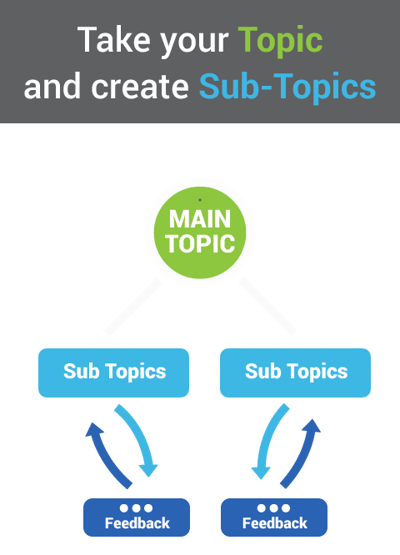
Main Goal: Ask yourself what you want your readers to walk away with and make sure the content you’ve written gets that point across before moving on to adding the final design elements.
Just like the last step, your buyer persona should be the first thing on your mind when creating your first draft. Word choice, statistics, and formatting are incredibly important when putting together the first draft as you will want to make sure that you are providing the reader with relevant information, in the correct format, using industry-specific language that they will know and understand.
Think of your outline as the skeleton of your eBook. With that structure in place, you can fill in the rest of the muscles, internal organs, and other essential items that comprise the body of your eBook.
This is where the most of the content creation comes into play. Elaborate on the bullet points in your outline, and be sure to reference the links included. Take precautions to avoid plagiarism for both written content and for images.
Pro tip: To counter the effects of writer’s block, make a commitment to write a certain number of words. Don’t let a lack of direction get in the way of fulfilling this obligation, as you can always come back to your draft with the intention of revising it.
During this time just focus on creating strong content and worry about adding images, hyperlinks, and CTAs for later in the process.
Once you complete the first draft, send it to someone for a quick review. They’ll help you catch small spelling and grammar mistakes, they might be able to point you towards additional resources, and they can provide helpful feedback.
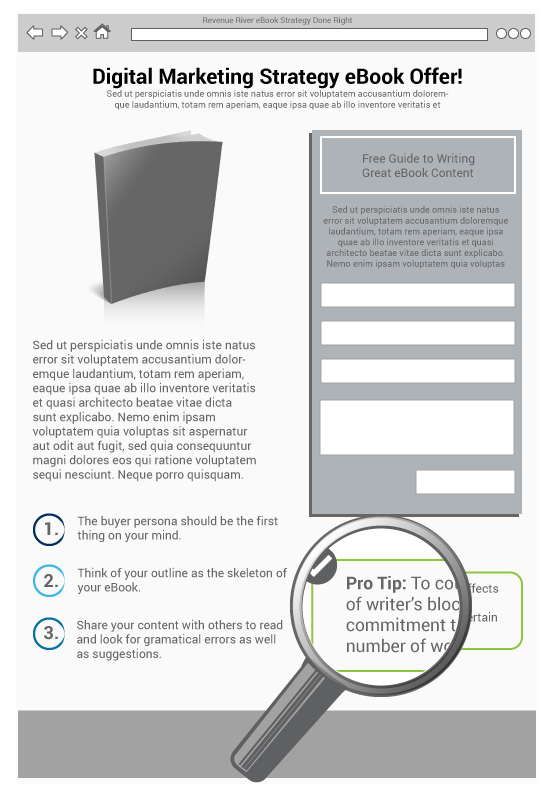
Main Goal: An eBook is thought of as useful information written by an expert; you will lose all credibility if your content contains errors, so take the time to make sure it’s perfect before you send it out online.
Perfection is a lot to ask for. Nobody is truly perfect, but that doesn’t mean that your content can’t be the best that it possibly can be.
With your completed rough draft, take the time to proofread your work for any spelling, grammatical or sentence structure errors that you may have missed when first writing it. This is why it’s critical to send your content to a friend or co-worker to help with this step. It’s essential to understand that spellchecking software can help, but you should still read your content aloud to ensure no errors are made.
Pro tip: Utilize spellcheck when you can, but don’t forget about spellchecking tools like Grammarly, Ginger Software, TinySpell, and others. They’ll suggest stylisitic changes to help your content and will catch most all errors.
Once your content has gotten the once-over by a few fresh eyes and revisions have been made, it’s time to finalize your copy and start focusing on designing it for a more aesthetic look.
Main Goal: You’ve spent so much time creating great content, so make sure you spend the same amount of time dressing up your eBook with the necessary design components and according to industry best practices.
Since eBooks no longer are as effective as they once were, it’s more essential to create a well-designed and developed page template that it is to create a downloadable PDF.
Companies are starting to “ungate” their eBooks. This means that people don’t have to submit a form to access this content, resulting in better page metrics. These ungated eBooks can generate hundreds or thousands of visits per month.
When designed properly with conversion points and links to additional information, you can keep your target audience on this page for much longer than ususal.
Pro tip: Make sure that you’re not creating a new blog post with this content. You’ll receive more of a SEO benefit from making this a normal website page, or a long form content page.
Make sure that your eBook is also developed as a PDF, as people might still want to download and share your resources.
The layout of your eBook content page should contain the following:
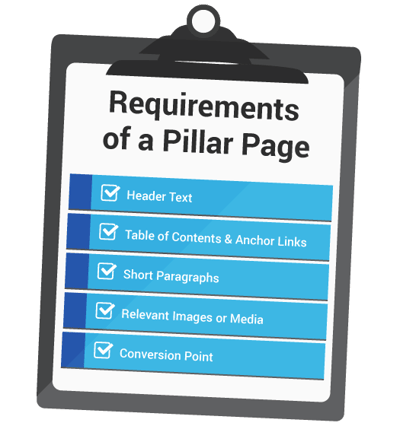
Main Goal: Spend time promoting your new eBook through all available channels to make sure people know what it is, where they can get it and why they should.
You’ve created your eBook, complete with conversion points, a Table of Contents, and any images. Nice job! Now it’s time to promote your new eBook.
Many great offers go unnoticed every day because people simply don’t hear about them. As a rule of thumb, HubSpot tells people to spend as much time promoting their content as they spent creating it. If you spent over 5 hours creating your eBook, you should spend over 5 hours promoting it.
Place your new CTAs on relevant pages on your website so that you can drive as many eyes as possible to this new offer. You can even attach them to relevant blog articles, and promote it on social media so that everyone in your network knows about your new offer and why they need it.
Here are some additional promotion ideas for your new eBook:
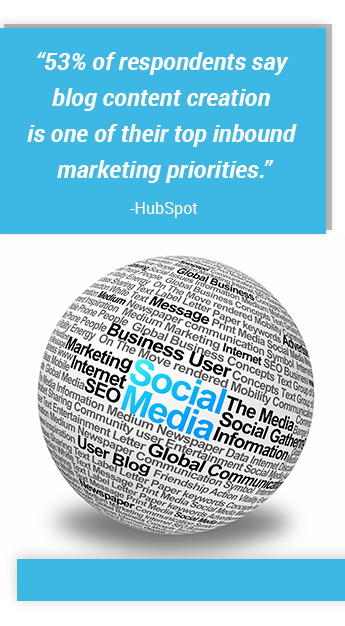
Main Goal: You can get a lot of mileage out of a good eBook, just make sure to keep it updated and relevant as new information and data comes along.
Trends are only relevant for a finite amount of time. They need to be adjusted as new data is released and analyzed. Organizations that can stay on top of their content to better understand when it needs to be updated will have a stronger online presence than their competitors.
Don’t simply create your eBook and forget about it. Track how many views it gets, how long people stay on the page, and any conversions are generated from it. Look at that data to create hypotheses on how to improve those metrics.
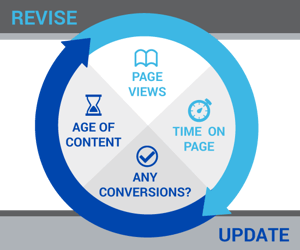
Putting together all the necessary components for an eBook is no easy feat. Especially considering that industry best practices reward companies that take the time and energy to create a valuable piece of content that your target audience truly cares about.
It may seem like a daunting process, but if you follow these simple steps outlined here, you’ll have your very own eBook. When used properly, these ungated pages can generate significant traffic and drive conversions to potentially contribute to your bottom line.
Every business with a complex sales process needs to create educational content in the form of eBooks because these content pieces can help you distinguish yourselves from your competitors.